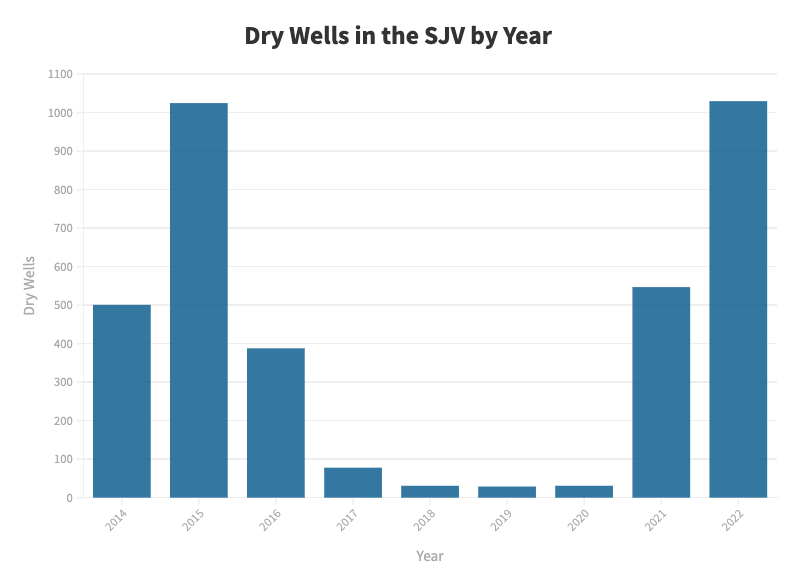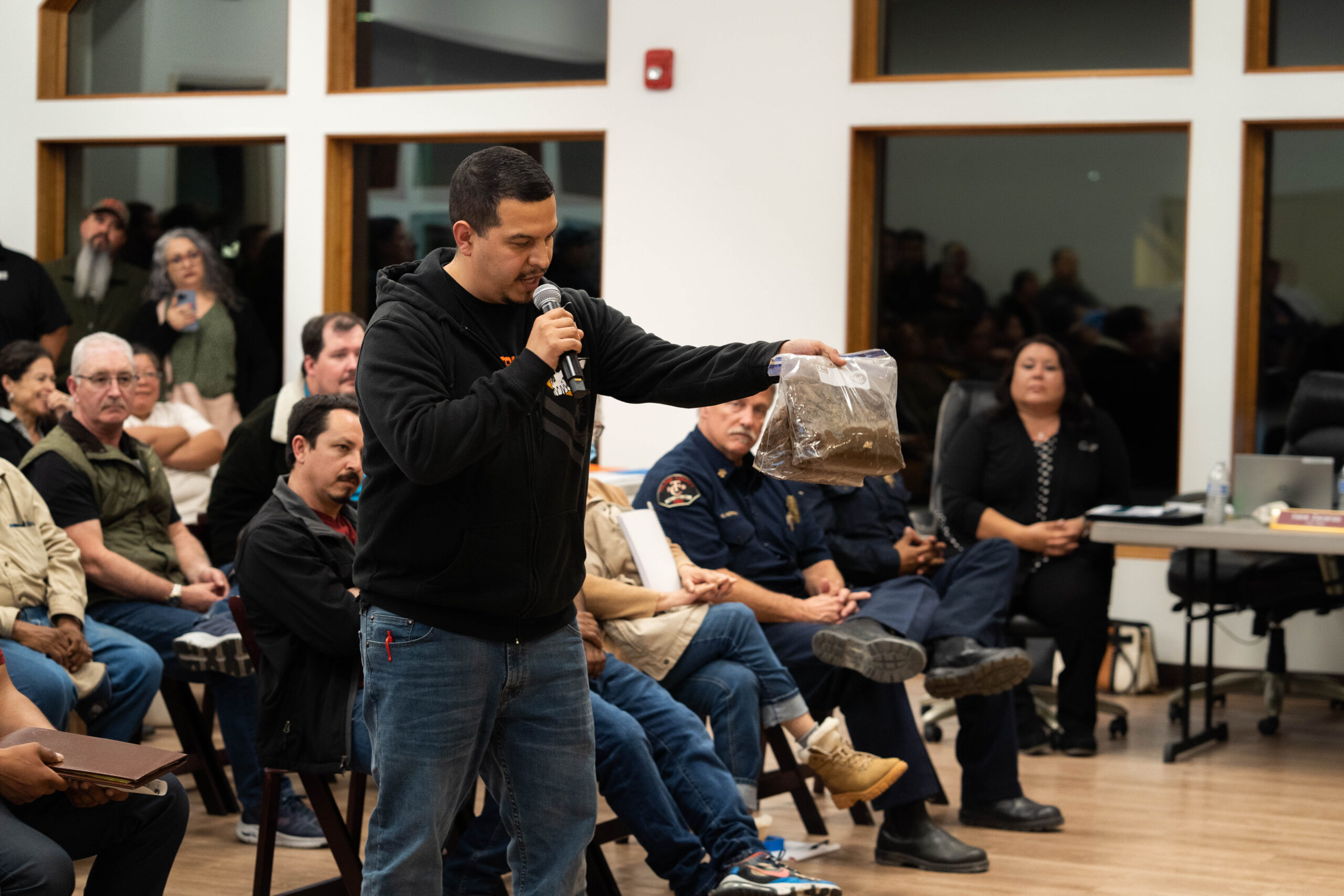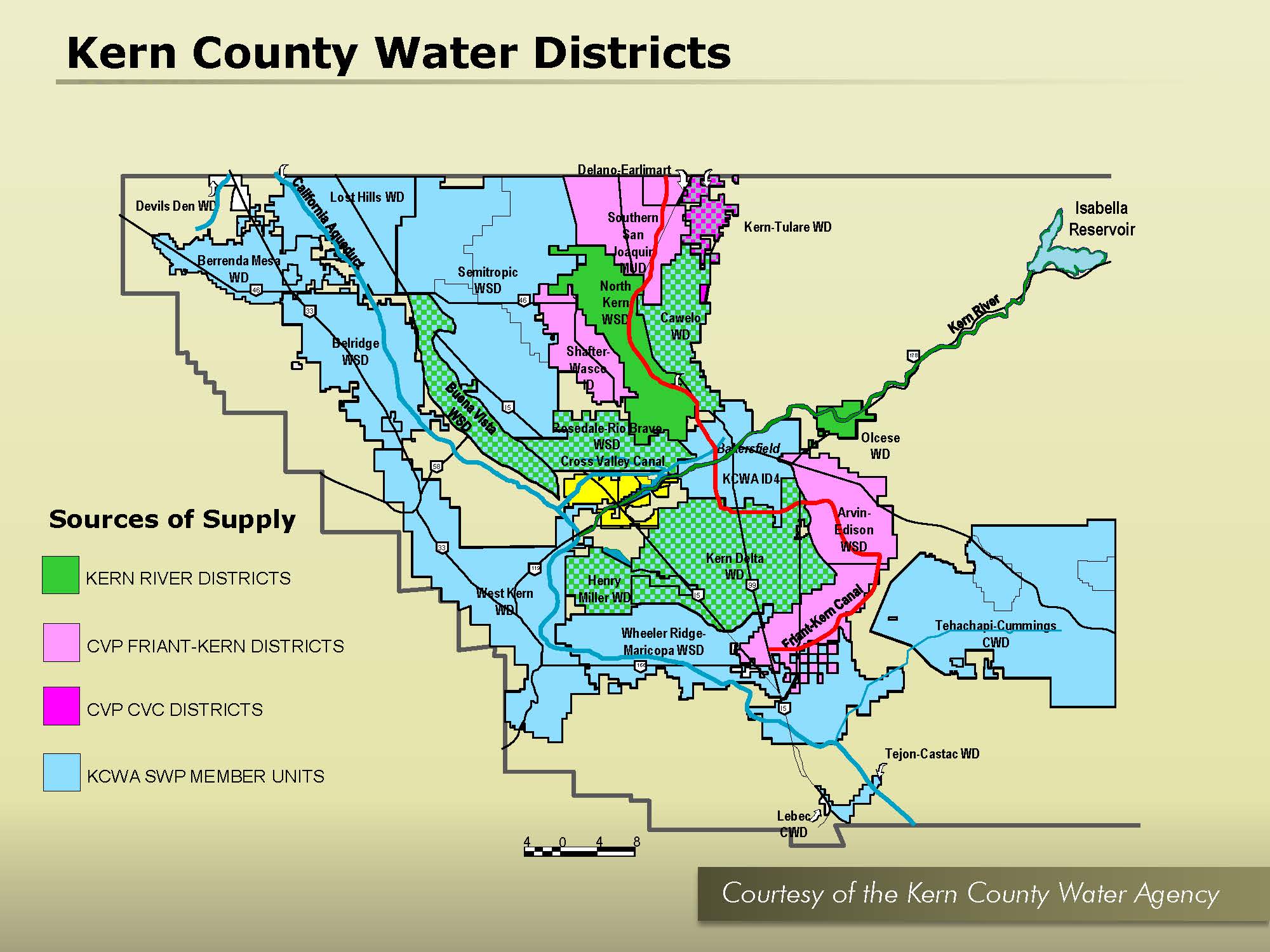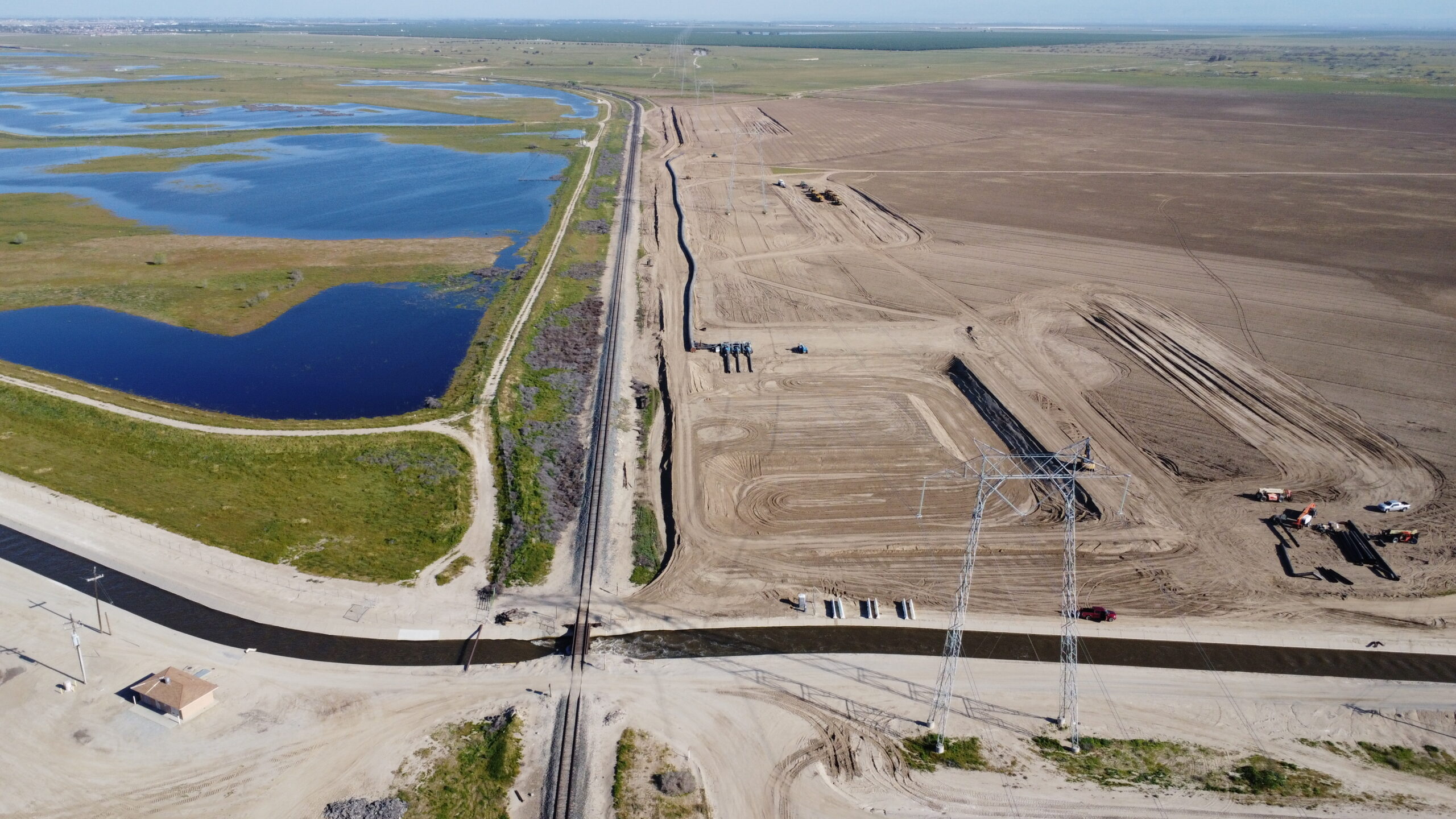A wave of dry wells has hit the San Joaquin Valley hard this year putting the valley on track to see the most dry wells since the state began tracking that information in 2013.
And while wells have dried up throughout the state, the valley is the epicenter of dry wells.
As of the end of November, the valley had 1,017 wells go dry. That represents 72% of all dry wells reported statewide, according to the Department of Water Resources (DWR) dry well database. These numbers only include wells that are reported to the state, meaning the issue could be more widespread.
During summer, the valley saw nearly 200 wells go dry each month, according to DWR’s tracking system. That rate slowed as winter approached but there were still 78 dry wells reported in October and 40 in November.
The number of dry wells so far is on track to exceed 2015, the worst year of the state’s last drought.
The epidemic of dry wells stems from plummeting groundwater levels, caused in part by agriculture’s heavy reliance on groundwater due to severely curtailed surface water deliveries because of the drought.
Families and small communities have been hit hard by the problem. Many households throughout the valley are without running water and survive on bottled or hauled water.
Visalia-based nonprofit Self-Help Enterprises works with the state to provide technical assistance and emergency response to the water crisis in the valley. It is one of the main providers of water tanks and hauled water for communities that run dry.
Typically, the number of wells going dry begins to taper off from October through April, said Melissa Looney, emergency services manager for Self-Help’s tanks and hauled water program.
“I can tell you this past year that was definitely not the case,” said Looney.
After an exceptionally dry winter in late 2021 and early 2022, calls for dry wells began ramping up in February, she added.
Self-Help currently has 1,667 tanks in the valley, 850 of which were added this year, wrote Looney in an email.
The good news is funding for emergency measures from state agencies has been consistent, according to Michael Claiborne, directing attorney for nonprofit Leadership Counsel for Justice and Accountability, which also works with valley communities on water issues.
“That funding has been there consistently over the last several years,” said Claiborne. “I expect that to continue.”
The valley will likely need more emergency funding in the coming years, said Claiborne. It could become a challenge next year because the state’s general fund isn’t as large as it has been over the last couple years, he added.
But even with money, getting new domestic wells drilled has been staggeringly difficult.
“There just aren’t enough well drillers willing to drill domestic wells,” said Claiborne. “So you can’t keep up with the pace of dry wells.”
Many drilling companies have been backlogged for up to six months.
Drillers contracted with organizations such as Self-Help, are able to get about 3-5 domestic wells drilled per month, estimated Claiborne.
Advocates have met with DWR staff to discuss the problem but there don’t seem to be many feasible solutions yet.
Leadership Counsel staff have discussed the idea of DWR putting well drillers on retainer with a type of exclusive contract. But you’d have to find drillers who would agree to that arrangement and that may not be possible, admitted Claiborne.
Another idea was for DWR to develop its own domestic well drilling staff.
“That so far hasn’t gone anywhere,” said Claiborne. “But I think it needs to.”
When asked about the idea, a spokesperson for DWR wrote in a statement that the department does have relationships with drilling companies and can assist communities to connect with local drillers. But, authority over construction rests with local agencies such as cities, counties or water agencies, the spokesperson added.
A fourth year of drought is expected and state agencies have begun to warn of more potentially dry conditions.
“If drought conditions continue into water year 2023, as is expected, there will continue to be increased reliance on groundwater, and we would anticipate more wells going dry,” wrote the DWR spokesperson.
On December 1, the department announced a 5% allocation for ag and municipal contractors in 2023. That’s slightly better than the initial 0% allocation of 2022.
But the potential fourth year of drought doesn’t bode well for small communities and residents relying on shallow wells.
“It’s not looking good,” said Claiborne. “I don’t have a lot of reason for hope in terms of the conditions we’re going to see on the ground next year if the water year is similar.”
Share this:
- Click to share on Facebook (Opens in new window)
- Click to share on Twitter (Opens in new window)
- Click to share on LinkedIn (Opens in new window)
- Click to share on Reddit (Opens in new window)
- Click to share on Tumblr (Opens in new window)
- Click to share on Pinterest (Opens in new window)
- Click to share on Pocket (Opens in new window)
- Click to share on Telegram (Opens in new window)
- Click to share on WhatsApp (Opens in new window)
- Click to print (Opens in new window)








